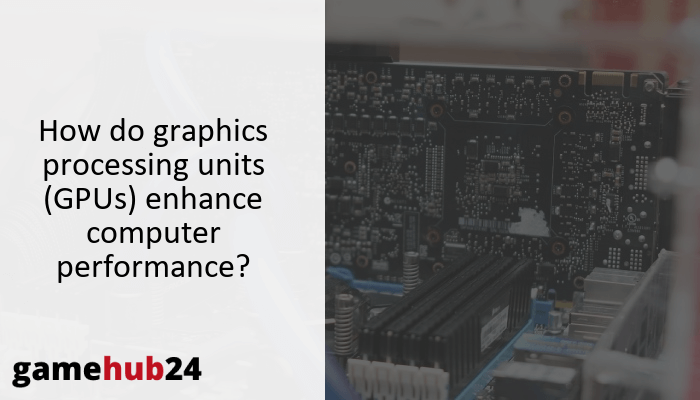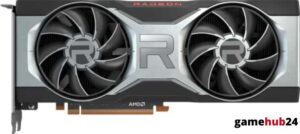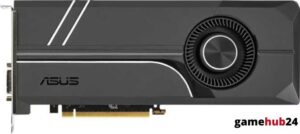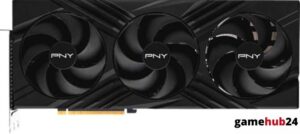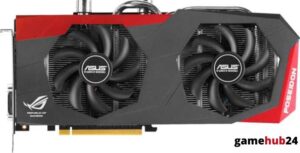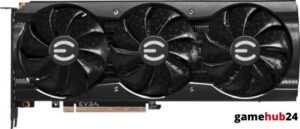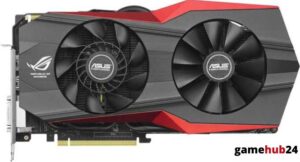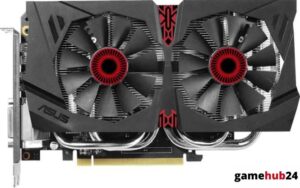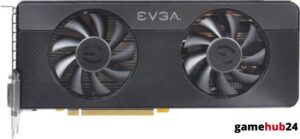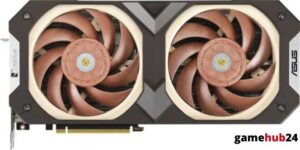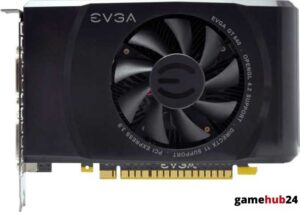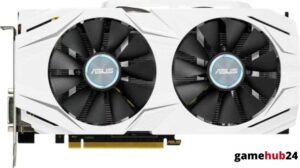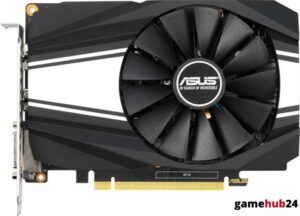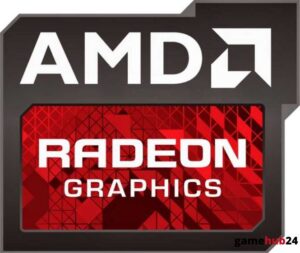The brains of parallel computing, high-quality graphics, and artificial intelligence are Graphics Processing Units, or GPUs for short. They are the unsung heroes who contribute to the seamless and immersive nature of our digital experiences. Graphics cards from Nvidia and AMD Radeon in particular are notable for their distinct features and functionalities. They perform even better because to technologies like CrossFire and SLI, which have a big impact on the computer and digital graphics industries.
GPUs are the engine that drives visual computing, allowing images, animations, and movies to render at lightning speed. They are essential to computer vision, parallel computing, and video game rendering. Shader units, texture mapping units, and stream processors are important GPU components. Despite their similarities, Nvidia and AMD Radeon GPUs offer different features and functionalities. Performance can be improved by combining multiple GPUs thanks to technologies like CrossFire and SLI. Additionally, GPUs are essential to AI and deep learning because they make it easier to train complicated neural networks. The GPU interacts with APIs like OpenGL and DirectX, affecting its functionality and performance.
- GPUs are essential for rendering high-quality graphics and performing tasks requiring simultaneous processing.
- Components of a GPU include shader units, texture mapping units, and stream processors.
- Nvidia and AMD Radeon GPUs have unique features and capabilities.
- Technologies like SLI and CrossFire enhance GPU performance by allowing multiple GPUs to work together.
- GPUs play a crucial role in deep learning and AI, facilitating the training of complex neural networks.
- APIs like OpenGL and DirectX interact with the GPU, influencing its performance and functionality.
What are the basic functions of a GPU?
The brains of visual computing capability are graphics processing units (GPUs), which can process complicated computations at blazing rates and provide stunning visuals. For the computer’s screen, they are in charge of rendering pictures, animations, and videos. GPUs are also essential for jobs like video editing and 3D graphics that call for simultaneous processing. They are made to quickly access and modify memory in order to speed up the process of creating images that will be output to a display device. Because of this, they are an essential component of every high-end PC, especially those used for video editing and gaming.
What role does a GPU play in video game rendering?
Rendering video games is a difficult undertaking that needs a lot of processing power. A GPU is specially designed to do this job because of its many cores. It creates a pixel-based image from the data from the game engine, which is subsequently shown on the screen. This data includes textures, lighting details, and geometric shapes. The GPU’s multitasking capability allows for real-time rendering of intricate, lifelike sceneries, which improves the gaming experience.
How does a GPU contribute to computer vision?
The study of computer vision—the art of making computers understand visual information—heavily depends on GPUs’ capacity for parallel processing. The design of the GPU is ideal for these activities since they require the analysis and interpretation of large volumes of visual data. Because GPUs can analyze numerous pieces of data at once, they are perfect for tasks like depth perception, image recognition, and object detection. Significant progress has been made as a result in industries including robots, surveillance, and autonomous driving.
Did you know that Nvidia was the one who originally used the word “GPU” in 1999? They debuted it with the release of the GeForce 256, the first GPU in history, which allowed the CPU to be used for other activities by conducting Transform and Lighting (T&L) operations on the GPU itself.
Why is a GPU essential for parallel computing?
The foundation of contemporary computing is parallel computing, which is the process of carrying out several computations at once. GPUs are made specifically for this use, and some models have hundreds or even thousands of cores. When a work can be divided into smaller, independent tasks, they are significantly more efficient than CPUs because they can manage numerous threads at once. Because of this, GPUs are essential for uses in big data analytics, machine learning, and scientific computing.
What are the key components of a GPU?
A GPU is made up of a number of essential parts, each of which enhances the performance of the whole. These consist of stream processors, texture mapping units, and shader units. In order to render graphics, shader units must conduct intricate mathematical computations. By applying textures to 3D models, texture mapping units provide the pictures more depth and authenticity. The GPU’s workhorses, on the other hand, are the stream processors, which handle the majority of the calculations needed for parallel computing and graphic rendering.
What are shader units and how do they work?
The brains of a GPU are called shader units, or shader cores. They are in charge of carrying out the intricate mathematical procedures that produce the final image’s pixels. Shader units are perfect for generating graphics since they can handle numerous operations at once. on determine the final color of a pixel, they take input data—such as the location of a pixel or the color of a light source—and apply a number of mathematical operations on it.
What is the function of texture mapping units?
A GPU’s texture mapping units (TMUs) are an essential part. They are in charge of texture mapping, which is the process of adding textures to 3D models. In order to give a 3D item a lifelike appearance, a 2D picture, or texture, is wrapped around it. Because the TMUs complete this operation quickly, complex scenes with intricate textures can be rendered in real time.
Advice: Think about the kinds of jobs you’ll be doing before selecting a GPU. With their CUDA and Tensor cores, Nvidia’s GPUs are perfect for AI and machine learning applications. However, AMD’s GPUs are excellent for high-end gaming and graphics work because of their robust ray tracing capabilities.
How do stream processors contribute to a GPU’s performance?
The main processing components of a GPU are called stream processors, sometimes referred to as CUDA cores on Nvidia GPUs or stream processors on AMD GPUs. They are perfect for jobs that may be divided into smaller, independent tasks because of their ability to manage many operations at once. This covers activities related to scientific computing and machine learning, where massive datasets can be processed in parallel, as well as graphics rendering, where each pixel can be calculated independently.
How do Nvidia Corporation and AMD Radeon GPUs differ?
Despite their many similarities, Nvidia and AMD Radeon GPUs differ in a few key areas. The CUDA and Tensor Cores included in Nvidia GPUs are well-known for their ability to perform machine learning and parallel processing, respectively. On the other hand, AMD Radeon GPUs are well known for its ray tracing technology, which makes it possible to simulate realistic reflections and lighting. The two brands also take distinct approaches to GDDR6 and video RAM, with each providing varying capacities and speeds.
What are the unique features of Nvidia’s CUDA and Tensor Cores?
Because Nvidia’s CUDA cores are made for parallel processing, they are perfect for jobs that can be divided into smaller, more manageable tasks. This covers activities related to scientific computing and machine learning, where massive datasets can be processed in parallel, as well as graphics rendering, where each pixel can be calculated independently. On the other hand, tensor cores are specialized hardware components made especially to carry out the tensor operations required for machine learning tasks. They expedite the training and inference of neural networks by enabling the faster and more effective handling of machine learning workloads.
How does AMD Radeon’s ray tracing technology work?
The ray tracing technology from AMD Radeon is a technique for producing visuals that mimics the real-world behavior of light. It tracks the direction of light rays from the viewer’s eye across the three-dimensional image, determining the color of each pixel according to the amount of light that reaches it. This increases the final image’s realism by enabling the depiction of realistic lighting, shadows, and reflections. AMD Radeon GPUs are made to efficiently handle the computational demands of ray tracing, which makes them perfect for professional graphics work and high-end gaming.
What are the differences in video RAM and GDDR6 between Nvidia and AMD Radeon?
GPUs use two different forms of memory: GDDR6 and Video RAM (VRAM). The data that the GPU requires to generate images, including textures, lighting information, and geometric data, is stored in VRAM. In contrast, GDDR6 is a kind of VRAM that provides more bandwidth and faster speeds than its predecessors, enabling quicker data transfer between the memory and the GPU. Although VRAM and GDDR6 are used by both Nvidia and AMD Radeon GPUs, their capacities and speeds vary, and each company tailors its memory configurations to fit their unique designs and target markets.
What is the role of GPUs in deep learning and artificial intelligence?
In the fields of deep learning and artificial intelligence (AI), GPUs are essential. Many artificial intelligence applications rely on deep learning algorithms, which need a significant amount of processing power to train and operate. GPUs are the perfect tool for this purpose because of their capacity for parallel processing. They can handle massive volumes of data at once, which speeds up deep learning model training and makes real-time AI applications possible.
How do GPUs facilitate deep learning algorithms?
Large volumes of data are used in deep learning algorithms to train neural networks, a process that demands a lot of processing power. GPUs are the perfect tool for this purpose because of their capacity for parallel processing. They are significantly more effective than CPUs in deep learning tasks because they can handle massive volumes of data at once. This facilitates quicker neural network training, leading to the creation of more intricate and precise models.
What is the impact of GPUs on artificial intelligence development?
GPU technology has significantly influenced the advancement of artificial intelligence. Their ability to process data in parallel has allowed for the training of intricate neural networks on enormous datasets, which has significantly advanced artificial intelligence. GPUs have sped up research in areas like computer vision, natural language processing, and autonomous driving by enabling the creation of more complex and accurate AI models. Additionally, by enabling researchers and developers to train and run AI models on common hardware, GPUs have increased accessibility to AI.
How do SLI and CrossFire technologies improve GPU performance?
Nvidia and AMD, respectively, developed SLI (Scalable Link Interface) and CrossFire, two technologies intended to boost GPU performance. They function by enabling the cooperative use of several GPUs, thereby pooling their resources to render graphics. Significant performance gains can come from this, especially for high-end gaming and professional graphic design work.
What is SLI technology and how does it enhance Nvidia GPUs?
Nvidia created the Scalable Link Interface (SLI) technology, which enables many GPUs to function together. These GPUs can render images more rapidly and effectively by pooling their resources, which leads to faster frame rates and smoother gameplay. Each GPU is in charge of rendering a certain area of the screen as part of SLI’s rendering task division. Performance can be greatly increased thanks to this, especially for high-end gaming and professional graphic design work.
How does CrossFire technology boost the performance of AMD Radeon GPUs?
Similar to Nvidia’s SLI technology, AMD’s CrossFire enables several GPUs to function together. These GPUs can render images more rapidly and effectively by pooling their resources, which leads to faster frame rates and smoother gameplay. Each GPU is given a specific section of the screen to render as part of CrossFire’s rendering task division. Performance can be greatly increased thanks to this, especially for high-end gaming and professional graphic design work.
What are the implications of OpenGL and DirectX on GPU functionality?
Two important APIs (Application Programming Interfaces) that communicate with the GPU are OpenGL (Open Graphics Library) and DirectX. They give software a means of interacting with the GPU and giving it commands on how to render graphics. Both OpenGL and DirectX come with a plethora of features and functionalities that can greatly impact a GPU’s speed and capabilities.
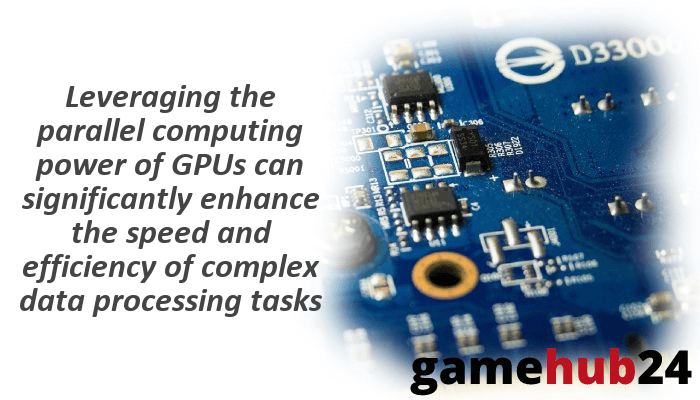
How does OpenGL interact with GPUs?
An API for rendering 2D and 3D graphics that is cross-platform is called OpenGL, or Open Graphics Library. It gives software a standardized means of interacting with the GPU and giving it commands on how to render graphics. OpenGL is extensively employed in numerous applications, ranging from professional graphics software to video games. It can greatly impact a GPU’s functionality and performance, and it provides an extensive array of functionalities.
What is the role of DirectX in GPU-based rendering?
Microsoft created the DirectX family of APIs, which enables software to communicate with the GPU. Direct3D is one of the APIs for producing 3D graphics; additional APIs are used for input management and sound playback. Windows-based apps, especially video games, are the main applications that use DirectX. It can greatly impact a GPU’s functionality and performance, and it provides an extensive array of functionalities.

